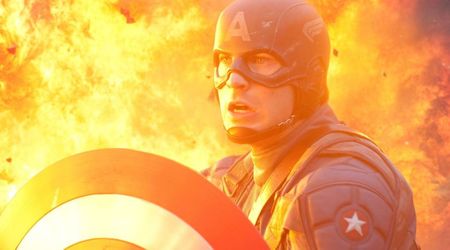'The Painted Bird' Review: The dark fairytale about World War II is a coming-of-age drama like no other

What if the horrors of the last days of World War II were made into a dark fairytale to warn generations to come of the depths men (and women) could fall to? Like every fairytale, there would be a child and, before him, would lie a treacherous terrain — a dark and forbidding forest or a steep mountain. Strewn on his path would be the bodies of countless others who had tried to cross and fail — defeated by terrors that could only be imagined.
The child would try to find his way back home, only to get lost and meet the wolf in sheep's clothing, the witch, the beautiful but evil princess, the priest, the (Nazi) prince, and the hunter. Archetypes of light and shadow would crowd his journey and the last page of the book would see him, wiser, finally spotting his home near the horizon. Once he does, he is able to speak again, released from his curse, and able to say his name.
'The Painted Bird' is based on a novel by Jerzy Kosiński, a Polish Jew, whose family was sheltered by Catholic peasants (at the risk of death to them and their families) during the Second World War. At the time of publication, he faced relentless attacks about how 'The Painted Bird' (that read like a memoir) was a complete work of fiction. For those who had survived the real horrors of World War II, it was a travesty.
And yet, authors have done the opposite without condemnation — take Charles Dickens whose 'Oliver Twist' showed the truth about the Victorian poor houses, orphanages and child labor, with a pinch of sugar (read happy ending) to make the medicine go down. Similarly, Kosiński's novel and now the film, directed by Václav Marhoul, collects all the horrors children do face in wars across the world and stuffs them into the story of one boy, trying to find his way back home to his parents. In doing so, it a coming-of-age drama like no other.
While the film works as a parable or a dark fairytale, it is also emotionally truthful at its core — reflecting the horrors and trauma child refugees face, then during the World War and now, as they flee conflict in places like Afghanistan, Syria, South Sudan, and El Salvador. Shot in black and white on 35mm film further intensifies the timeless quality of the film. Its "chapters" are titled by the names of the people/archetypes, the boy will meet in that segment. Each encounter forces the boy to grow up in different ways.
He starts off as innocent, trying to protect his pet ferret from being burnt alive by the village's bullies. He is so polite and well-mannered at this point that he stays in bed the whole day than part the curtains that his aunt has strung up in the middle of the house. When he finally does, he realizes his aunt, in whose hands his parents had left him, is dead. And so begins his journey. By the end of the journey, just before he meets his father, he kills a man who strikes him for being a Jew. He is no longer ok with being a passive victim.
'The Boy' whose name we do not know till the very last frame of the film forgives his father for abandoning him by writing his name on the glass. It is a reminder to himself of his own humanity and that of his father, who has the dreaded camp numbers on his arm. Enough has been said about the shocking scenes in this film, from incest to rape, to animals being tortured, killed (or f**ked), to mutilations, beatings and killings.
But most of the truly horrific things happen off-screen. We are left to imagine what happens, which actually makes the tension in certain scenes even worse, like the male cat wriggling in the tied sack at dinner-time at the jealous miller's house. At the heart of the film lies its message — the difference is fatal — it is hardwired into our biology to reject the outsider, the interloper. And war, which breaks down the last vestiges of civilization and civility, makes us no better than a flock of blackbirds that tears the white painted bird in their midst to shreds.
'The Painted Bird' releases on VOD and select theatres on July 17 and is distributed by IFC Films.










